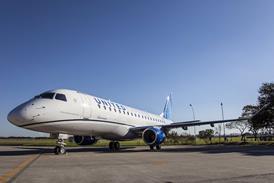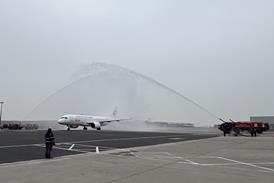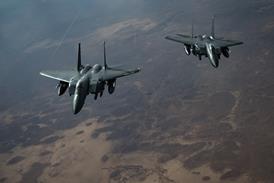Viewed from the perspective of an air show visitor, the so-called light-sport aircraft sector is flourishing. Go to international general aviation shows such as Aero Friedrichshafen, in Germany, AirVenture in Oshkosh, USA, or even regional trade events such as Australia’s Avalon and there will be new models on display – and new makers – of these aircraft. Indeed, when the category was conceived by the US Federal Aviation Administration as a way to bring ultralights under its influence, and as a response to a hodgepodge of European regulations (where each country has its own standards), the then-FAA administrator, Marion Blakey, forecast there would be 9,000 US-registered LSAs by 2015. For a GA industry suffering long-term decline, with owner-pilots being priced out of the market by increasingly complex, and expensive machines, the LSA concept was a breath of fresh air.
In the event, that 2015 total turned out to be closer to 3,000.
However, while there are no global statistics and regulations vary country by country, the light-sport segment – simple single or two-seat aircraft, with a fixed-gear and piston engine, weighing no more than 600kg (1,310lb) or 650kg in the case of a seaplane or amphibian – is clearly a dynamic market. The category accounts for about a fifth of piston singles on an annual basis, but those figures reflect its relative strength in the US market.
Considering that the combined ultralight market in Germany and the Czech Republic in an average year is usually 10% larger than the total US LSA market, it is likely that total aircraft shipments in the sub-600kg LSA class eclipse total shipments of certificated piston-singles worldwide. Manufacturers surveyed for this article allocate between 10% and 30% of their production to the US market.
Navigating regulations
This dynamism is driven by astute entrepreneurs, aircraft designers and business people – often small businesses – who navigate the regulations in each market they serve. But the original intention of keeping costs down is at least partly undermined by the fact that the regulations are far from uniform. For example, the USA weight limit is 600kg while the German standard is 450kg – or 472.5kg if equipped with a whole aircraft parachute. The US standard is fixed-gear and fixed-pitch propeller. Most European standards allow for constant-speed propellers and retractable gear.
The FAA has a maximum clean aircraft (no flap) stall speed of 45kt (83km/h). Australian standards specify a maximum stall speed of 45kt in the landing configuration (with flaps). The FAA has a maximum horizontal calibrated airspeed of 120kt, while most other standards have no limiting top speed. The UK’s British civil aviation requirement, Section S specifies greater factor of safety on structural components than all other standards.
Not surprisingly, of companies surveyed, on average they are building 16 minor variants of the same aircraft to comply with the various standards. “Each plane is an original, no two are the same,” according to Milan Bristela, chief executive of Czech light aircraft designer BRM Aero.
And, as the standards evolve and change over time, aircraft designs must evolve, too. For example, Cirrus Aircraft certificated its roughly 1,000kg SR20 piston single in 1998. For such a category, the certification standards in force in 1998 remain the basis of all subsequent aircraft updates. Not so with LSAs. As the standards change, so must the aircraft.
Those opting for the “certificated” – as opposed to “self declared” – route to market have three main avenues: CS-LSA and CS-VLA in Europe and Primary Category in the USA. The seven aircraft certificated under CS-LSA since it was introduced in 2013 were all aircraft that had hundreds of copies flying under the “self-declaration” system prior to applying for their restricted type certificate (RTC). That each EASA application took approximately two years is hardly a great endorsement of the process. Germany’s Auto-Gyro received the only FAA Primary Category award of the 21st Century for their Calidus gyrocopter, itself a product of the self-declaration system.
Jan Fridrich, chairman of the Light Aircraft Manufacturers Association, Europe, puts it bluntly. “The EASA system is not what we wanted. It is too complicated. The only substantive difference between CS-LSA and CS-VLA is 150kg maximum take-off mass.
“Was VLA a success? No. So why does EASA think that CS-LSA with restricted type certificates would be a success? EASA lost a historical opportunity to create a better LSA framework than the USA.”
The same could be argued for the FAA’s Primary Category as less than a handful of aircraft in total have been awarded it since its introduction in the early 1990s.
Another factor affecting private flying – and sales of LSAs – is private pilot medical qualification. Reform has taken place in both the UK and USA. While the USA’s new regime for non-LSA flying is not as permissive as for LSAs, it is seen as a substantial step in the right direction.
Ultimately, the larger opportunity for LSA manufacturers is to offer up scaled kits of their current aircraft in the experimental (home built) category that are heavier, faster models.
Sector stars
While there are many great aircraft in the sub-600kg category, there are only a few standout businesses, which have outstanding marketing, sales, production, delivery and after-sales systems, along with global distribution.
One of these is Tecnam, based in Italy and making aircraft since 1948. Tecnam has leveraged knowhow from microlight/ultralight aircraft into certificated aircraft. Their starter aircraft, the P92 is available for multiple certification standards and even has a CS-VLA type certificate.
With seven core models and 23 variants, Tecnam produces 19 different LSA-type (sub-600kg) aircraft. It has also fully certificated a four-place single, three variations of its four-seat twin and is developing an 11-seat piston twin called the P2012 Traveller.
Another is CubCrafters, founded by Jim Richmond in the 1980s. The company has leveraged its Supercub restoration business into manufacturing certificated aircraft. Arriving late to the LSA party in 2007 with the Sport Cub, the Carbon Cub has dominated the US LSA category ever since its 2009 introduction.
In 2016 the company launched the X-Cub, a Part 23-certificated aircraft, building on Carbon Cub experience. CubCrafters has shown how to exploit and dominate a niche and leverage that ability into larger, faster and more capable aircraft and has a small but growing international footprint.
Star potential
Flight Design has a global footprint with more than 1,800 CT-series aircraft delivered to date. Its latest C4 piston-single shows promise as an excellent high-wing, four-seat utility aircraft. If Flight Design emerges intact from current German court creditor protection, the C4 has huge potential.
Slovenia’s Pipistrel is relentless; as well as selling a range of light aircraft such as the Virus and Sinus, it is working on the Panthera, a four-seat, high-speed cruiser. Multiple powerplant options include an all-electric version, a hybrid option and a traditional Lycoming engine. Pipistrel’s considerable expertise with all-electric power spans its Alpha trainer and several EU-sponsored electric aircraft projects. If Pipistrel can commercialise one of these projects, it could have a long run.
Established in the early 1990s and merged with Aero-Tecknik, Evektor started license-building the P220 Koala ultralight, which morphed into the Eurostar, Sportstar and Harmony line of piston singles. Evektor has been involved in the Ae270 Ibis, Raven, Seabird and Cobra projects. None of these projects has been commercialised. The Czech company’s current focus is the EV-55 Outback, a 12-passenger unpressurised turboprop twin. Evektor has evolved cautiously while producing quality aircraft. Whether it can bring a much larger aircraft to market remains to be seen.

Pipistrel is working on the Panthera, which has electric and hybrid versions
Pipistrel
Though not a fixed-wing, Auto-Gyro’s rotary wing autogyro is certainly part of the LSA-type market. That the German maker recently secured an FAA Primary Category type certificate for its tandem Calidus auto-gyro demonstrates considerable technical ability. It has been developing the auto-gyro concept for the last decade, starting with an open cockpit version, then a fully enclosed tandem and the latest is a side-by-side fully enclosed craft. Rotax’s new 135hp (101kW) 915iS piston engine will provide a major power increase for these draggy, but unique, aircraft. The company has yet to develop a substantial market outside Europe, but a new engine and a fresh type certificate may be all the impetus it needs.
Founded in 2005, Icon Aircraft has demonstrated with its A5 amphibian, that it can design and market a beautiful aircraft. Whether it can manufacture the type profitably has yet to be seen. Icon is an outlier in its marketing approach and design philosophy. Appealing to the non-pilot, it has developed several design iterations but has failed to deliver a single customer aircraft because of problems with its manufacturing process. The first units are scheduled to roll off its production line Vacaville, California later this year.
Demanding customers
Buyers in this market expect the latest in glass panel technologies, multiple system redundancy and sophisticated autopilots. Bristela says: “Today’s customers are looking for the highest-quality, fully equipped LSAs with IFR equipment, full-featured autopilots, custom interiors and paint schemes.” The average ready-to-fly LSA sales price is $185,000, despite a base price average closer to $130,000. The trend is towards infinite customisation.
Randy Schlitter, founder and chief executive of Rans Aircraft says: “The most active market is current aircraft owners seeking replacement aircraft that have lower operating costs. We still sell most of our production into the retirement market but are seeing a definite increase in younger clients in their 30s and 40s.” While some flight schools do operate LSAs, their adoption is not widespread.
The future
In order to meet customer demands, LSA manufacturers want harmonised worldwide standards that include higher weights, no speed limits, inclusion of complex configurations and sensible stall speeds. They would like a global embrace of the “self declaration” system, but this is likely to be resisted by manufacturers of traditional certificated types.
Perhaps there is even a future for LSAs through the development of technologies like manned drones. “It literally can put a flying machine in every garage,” says Schlitter. “The game is really going to change with the impact of manned vertical take-off and landing (VTOL) craft. Many people are addressing this concept. The critical battery and control reliability solutions are being developed by the auto industry. No doubt Google, Apple, and Tesla are researching this, if not already making prototypes.
“Sport aviation will benefit in the long run, if the use of personal VTOLs becomes commonplace. There could be a new group of young aviators seeking the thrill of fixed-wing flight. If truly practical VTOLs are out there, then you will see a creative explosion of super cool aircraft in all forms.”
Source: Flight International

























